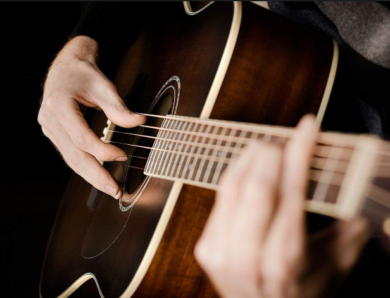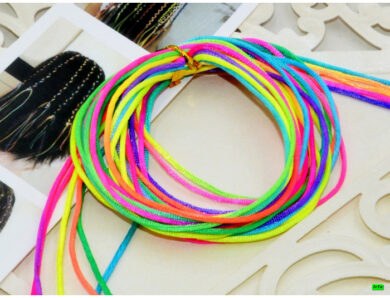Finishing the chimney on the roof. Choice of materials for finishing the chimney on the roof
Part of the chimney, towering over the roof, exposed to external adverse environmental factors. Therefore, the owner of the house has to think about its protection. That the roofing pie did not reduce the functionality, sealing the roof around the chimney should be performed qualitatively. in addition, the appearance of the flue design is important. It should not be inconsistent with the architectural concept of the building.
Finishing the chimney with decorative stone or other material is not just a matter of aesthetics, but also an important component of heat and waterproofing pipes
Choice of materials for finishing the chimney on the roof
It is necessary to choose a material for chimney finishing taking into account its protective possibilities. The service life of the flue system is reduced by the following negative factors:
- high operating temperature;
- precipitation;
- the difference in ambient temperature at different times of the year;
- ultraviolet radiation.
The main problem is the significant difference between the external atmospheric and high operating temperatures, due to which condensate is formed in the pipe. This leads to the inevitable destruction of the chimney structure. Reduce the amount in this case capable of destructive moisture dymovidvodu good insulation system using coating materials. They must be resistant to atmospheric phenomena, as well as wear resistance.
Currently, the treatment of the chimney on the roof is performed using the following materials:
- tile;
- decorative brick;
- roofing;
- cement slabs;
- solutions.
Finishing a chimney under stone or brick is very popular and suitable for most homes
Clinker tiles are characterized by high mechanical strength and resistance to weathering. Most often it is lined with tall thin pipes.
The most practical option is to finish the chimney with decorative clinker bricks. This material goes well with any type of roof, and what is formed on it during the operation of pollution is not noticeable.
As a roofing material corrugated board is more often used. This is nothing, knife is made by cold-rolled steel profiled sheet. Interest in corrugated board is due to the following factors: high protective properties, durability, affordable price combined with a sufficient level of decorativeness. The metal structure does not have much weight, easily installed, while providing an attractive aesthetic appearance.
Cement slabs are popular due to their relatively light weight and different variations in texture.
pay attention! The last property gives the chance to reproduce any surface.
And the material itself is non-flammable and environmentally friendly.
Finished aprons are easy and quick to install and provide effective protection against moisture
The use of prefabricated structures is an original solution. Most often, it produces rubber, which provides hydro - and thermal insulation. The wide protective apron prevents dirt from getting into the roofing pie and protects the design of the flue system from moisture. in addition, such an apron can be considered as a good design element. It is more suitable for external chimneys, made of stainless steel.
Selection of material for decorating the chimney inside the house
A stove or fireplace is being built in a country cottage, usually, in the living room. At the same time the chimney quite often passes through all rooms and through ceilings. In this case, it is necessary to harmoniously fit all the protruding parts into the interior. This is done in this sequence:
- first, a frame is constructed from a metal profile. Then it is covered with plasterboard. And not ordinary, and fire-resistant, labeled GKLO;
- to provide thermal insulation, fiberglass or mineral wool is placed inside the frame. The use of such a thermal insulator provides the ability to finish the surface of the sheet with any material, and even simple gluing of wall-paper is not excluded;
- at the final stage of processing it is recommended to use gypsum stucco or ceramic tile. They will emphasize the features of the interior of any style. It is advisable to make some elements in the form of a mosaic, in particular from glass of different colors.
Inside the house, the chimney can be hidden under a drywall frame, resistant to high temperatures
The most durable and durable for interior decoration is clinker brick. It is perfect for the interior, made in the style of minimalism, at the same time most often there is no need for additional decoration.
To create an interior decoration of antiquity and simplicity, often used plaster. This very old method still has many supporters.
It must be emphasized, that the correct thermal insulation of the chimney will make it possible to make the interior finish with any material. And the choice of decorating method is determined by taste preferences.
What rules and regulations should be followed
Before finishing the chimney, need to check, whether the finished design meets SNiP standards. For ventilation and heating requirements include the following points:
- the thickness of the chimneys, for the manufacture of which heat-resistant concrete was used, should be 60 millimeters, clay bricks - no less 120 millimeters;
- the mouth of the chimney must not be an obstacle to the free exit of smoke from the flue system;
- pipes, made of stainless steel, cannot be used for chimney equipment, when the furnace is heated by coal;
- the use of asbestos materials is not allowed;
- more freely the space between the roof and the pipes must be covered with non-combustible materials;
- materials must be used to make air ducts and pipelines, having an anticorrosive covering.
It is best to choose materials for finishing, which has not corrosion
On a side note! The use of those materials is also allowed, which is characterized by natural corrosion resistance.
in addition, it is necessary to insulate hot surfaces with a thermal insulator, which provides a temperature difference on the inside of the cladding surface to 20?WITH.
Stages of processing. Sealing
Facing the chimney on the roof begins with the installation of a protective apron at the exit to the roof. It fits in 2 layers: one floor covering, and the second is started under the roof. The joints must be carefully sealed.
The need for additional processing arises in such cases:
- the materials used for the chimney stand out from the general view, bringing disharmony to the stylist of the house;
- when a simple brick was used for facing, does not have the proper level of aesthetics;
- for decorating the elements of the chimney, overlooking the roof;
- insufficient draft in the flue system.
Ensuring the sealing of the pipe outlet is the first stage of finishing the chimney on the roof. More recently, Snipe's rules have ordered construction on site, where the pipe goes to the roof, extended brickwork. The purpose of this requirement is to perform sealing by bringing the roofing material under the apron. As a result, the design was cumbersome and aesthetically unattractive.
Flexible roofing material should be wrapped around the chimney, to ensure the tightness of the joint between the pipe and the roof
Modern materials eliminate such requirements without compromising the effectiveness of sealing. Any roofing material is wrapped around the chimney, then a protective apron is arranged. Galvanized metal is used to make the apron itself, thickness 2-4 millimeters. With, to ensure resistance to weathering, requires the presence of a polymer coating. Aprons are always made of non-combustible materials, able to withstand high temperatures.
The most optimal variant of realization of qualitative sealing is a combination of a metal apron with a protective polymeric covering and a flexible sealing tape. This tape is made of aluminum foil, and as a self-adhesive layer additives of polymeric and bituminous materials are used. Lay it under the apron there, where the chimney goes to the roof. After arranging the apron, a transparent silicone sealant is applied to the seams. Actually, this completes the sealing.
Execution of sewing
Additional stitching is often required when finishing a brick chimney. Usually, it is needed in such cases:
- when the masonry was made of simple bricks;
- if the pipe rises above the roof surface to a height of more than two meters, but at the same time weak draft is provided.
When finishing the chimney, you can use wood, but there is a risk, that the material will absorb condensate
One more point should be noted. It applies to air ducts, which have a light plastic base. This technical solution implies the absence of the need to install brickwork. In this case, the lining of the chimney simply closes the frame, through which this communication passes. Thick metal profiles or wooden beams are used to assemble the frame itself, which does not exceed 5?5 centimeters.
Importantly! In this case, the wood must be pre-treated with antiseptic. Many modern drugs of this type are able to protect it not only from weather conditions, but also from parasites, as well as increase its fire resistance.
However, experts consider the use of wood, as a controversial decision. After all, wood absorbs condensate well, which is formed at significant temperature differences.
One of the most practical ways is to cover the chimney with sheet metal. Installation is quite simple, and the cost of material and labor costs are minimal. If the insulation is made at the proper level, strong heating of the cladding will be excluded. This will cover the metal with rubber paint, which will protect it from the effects of adverse weather conditions and from UV radiation. And one more plus - the design will get additional aesthetics.
Returning to the question of finishing a brick chimney, elements of sophistication will add to it the use of decorative stone of natural or artificial origin. Of course, that the weight of the cladding is significantly increased. In this case it is necessary to provide durability of fastening by means of reliable connecting materials, otherwise it may just fall off the pipe. Example, in addition to the adhesive composition, edges of a covering are fixed by dowel or hardware fastening.
Advantages and disadvantages of facing materials
There is a wide variety of materials on the market for chimney decoration. To make the right choice, you need to know their differences and qualities.
Decking is a simple and affordable material, which can line the chimney on the roof
Decking is one of the best materials for finishing, like a roof, and the chimney. It is characterized by light weight, resistance to loads and to adverse weather factors. At the same time manufacturers offer a wide range of colors. As in metal, minus corrugated board - weak sound insulation.
Metal is good for its durability and ease of installation. Finishing the chimney with a metal profile will give the structure resistance to weathering and provide it with aesthetics. The disadvantage is the low level of sound insulation. However, this is not critical for the flue system.
Ceramic tile is suitable only for interior decoration. It is very demanding on the quality of preparatory work. So, it is mounted on flat and flat surfaces. The tile is characterized by an affordable price and high aesthetics.
Clinker brick is revered by home builders because of its durability and strength. In this case, the decorative qualities of the claim usually do not arise. Of the disadvantages are the relatively high cost and high weight. Therefore, without additional strengthening of the structure can not do.
Plaster is characterized by resistance to precipitation and durability. But in some cases, these advantages are offset by the complexity of installation.
On a side note! in addition, application of plaster often involves painting or forming the next layer in a decorative style.
Siding is installed on the chimney for exterior finishing only in the case of high-quality insulation. The reason for this requirement is, that they are made of plastic. The material is installed on a rigid base. Pros - not afraid of water and non-toxic. Cons - Melts when exposed to high temperatures and flames, low frost resistance and strength.
In conclusion, the basic rule should be mentioned, which should be followed when finishing the chimney: it must be safe for the health and life of the people living in the house.




